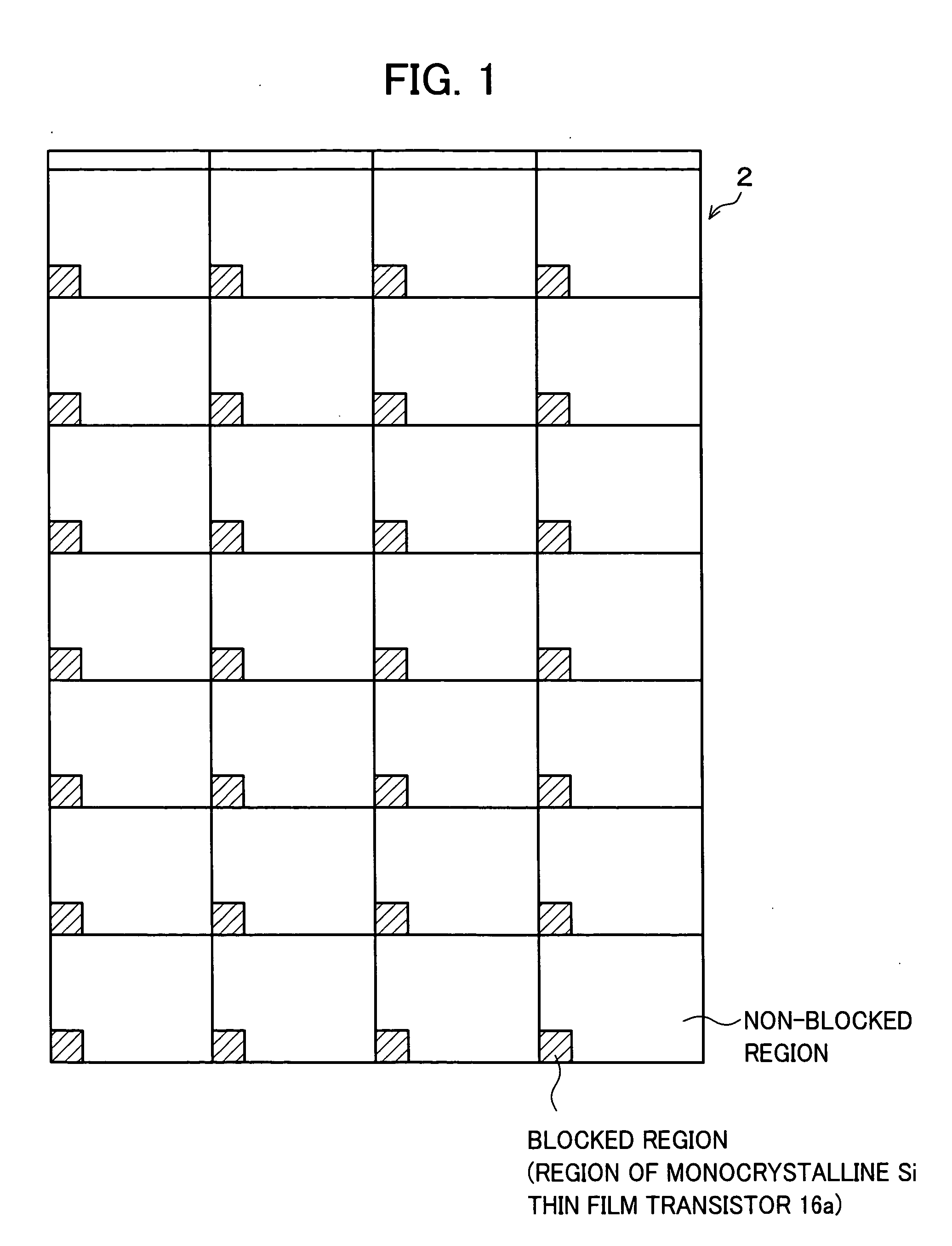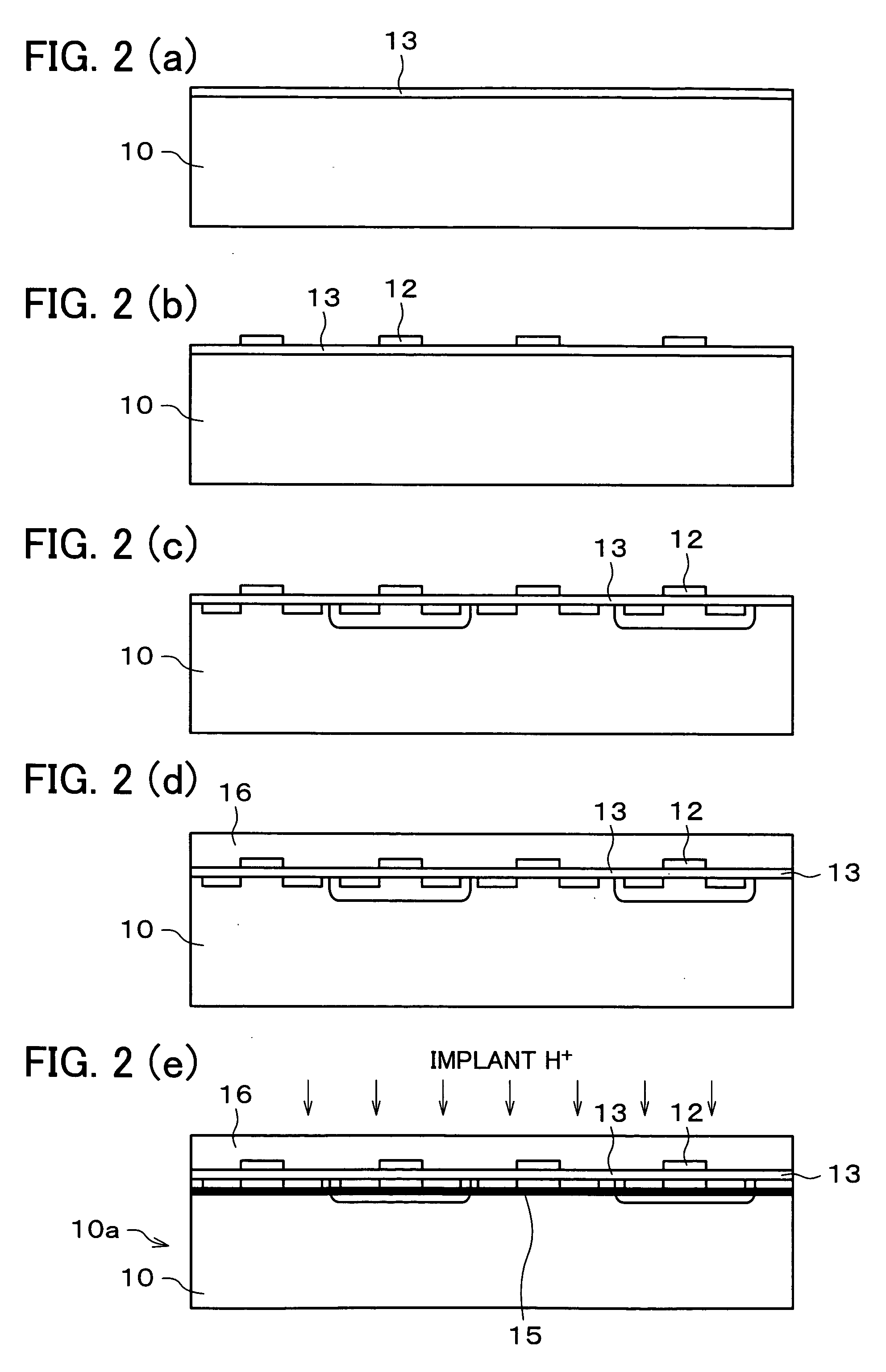Fabrication method of semiconductor device
a technology of semiconductor devices and fabrication methods, which is applied in the direction of semiconductor devices, basic electric elements, electrical equipment, etc., can solve the problems of limited application area of soi devices, difficult use of soi devices made of monocrystalline si, and extremely difficult for non-monocrystalline si devices to match the performance of monocrystalline si devices
- Summary
- Abstract
- Description
- Claims
- Application Information
AI Technical Summary
Benefits of technology
Problems solved by technology
Method used
Image
Examples
first embodiment
[0033] [First Embodiment]
[0034] One embodiment of the present invention is described below with reference to the attached drawings.
[0035] As described herein, a semiconductor device of the present embodiment provides improved performance and improved functionality by forming a MOS polycrystalline Si thin film transistor (deposited device, second device) and a MOS monocrystalline Si thin film transistor (transferred device, first device) in different regions on an insulating substrate. As described in this embodiment, the semiconductor device is formed on an active-matrix substrate using TFT.
[0036] The MOS thin film transistor is a common transistor including an active semiconductor layer, an gate electrode, a gate insulating film, and dense impurity doped portions (source electrodes and drain electrodes) formed on the both sides of a gate, wherein the gate electrode adjusts the carrier density of the semiconductor layer beneath the gate, so as to adjust a flow of source-drain curr...
second embodiment
[0104] [Second Embodiment]
[0105] Another embodiment of the present invention is described below with reference to the attached drawings. Note that, for convenience of explanation, members having the same functions are those described in conjunction with the semiconductor device of the foregoing First Embodiment are given the same reference numerals and detailed explanation thereof is omitted here.
[0106] As in the semiconductor device of the First Embodiment, a semiconductor device of the present embodiment provides improved performance and improved functionality by forming a MOS polycrystalline Si thin film transistor (deposited device, second device) and a MOS monocrystalline Si thin film transistor (transferred device, first device) in different regions on an insulating substrate. As described in this embodiment, the semiconductor device is formed on an active-matrix substrate using TFT.
[0107] As illustrated in FIG. 5(g), a semiconductor device 20 of the present embodiment inclu...
PUM
 Login to View More
Login to View More Abstract
Description
Claims
Application Information
 Login to View More
Login to View More - R&D
- Intellectual Property
- Life Sciences
- Materials
- Tech Scout
- Unparalleled Data Quality
- Higher Quality Content
- 60% Fewer Hallucinations
Browse by: Latest US Patents, China's latest patents, Technical Efficacy Thesaurus, Application Domain, Technology Topic, Popular Technical Reports.
© 2025 PatSnap. All rights reserved.Legal|Privacy policy|Modern Slavery Act Transparency Statement|Sitemap|About US| Contact US: help@patsnap.com



